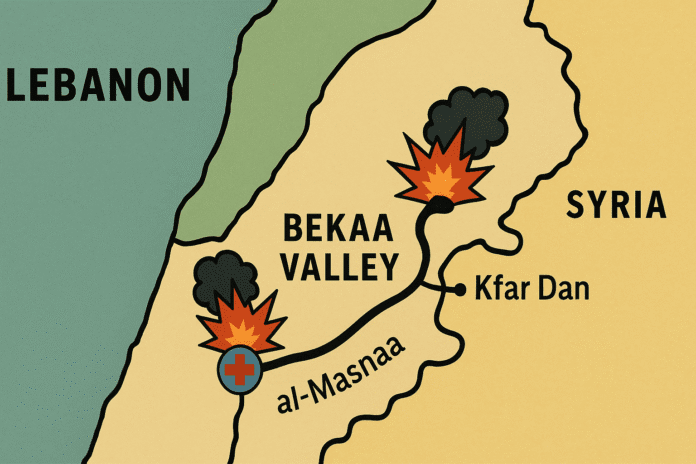A Ceasefire Frayed—Lives Lost Amid Rising Tensions in Eastern Lebanon
At Least Six Killed, Ten Wounded in Israeli Strikes on Eastern Lebanon
The deadly Israeli strikes on eastern Lebanon’s al‑Masnaa international road shattered a fragile truce. With six killed and ten wounded—five in a single vehicle attack—tensions are rising fast. What triggered this escalation, and what can be done to stop the cycle of violence?
What Happened — Strikes That Broke the Truce
Lebanon’s health ministry reported that an Israeli strike on Thursday hit a vehicle traveling on the al‑Masnaa road in the Bekaa Valley, killing five people and injuring ten. Soon after, another drone strike killed a civilian in Kfar Dan west of Baalbek X (formerly Twitter)+12Al Jazeera+12Anadolu Ajansı+12.
The al‑Masnaa incident was described by the ministry as a “preliminary toll,” later revised to six dead and ten wounded NaharnetChina News Service.
Context — A Ceasefire Under Strain
Israel and Hezbollah have been bound by a U.S.-brokered ceasefire since November 2024. Under this agreement, Hezbollah was supposed to withdraw north of the Litani River, while Israel was to pull out its forces from southern Lebanon. However, near-daily strikes by Israel continue, citing threats from Hezbollah China News Service+5Al Jazeera+5Wikipedia+5.
Political Fallout — Disarmament in the Spotlight
These deadly strikes coincided with Lebanon’s government endorsing a U.S.-backed plan to disarm Hezbollah by year’s end. U.S. envoy Tom Barrack called this a “historic” step toward a unified, state‑controlled military—“One Nation, One Army”—signaling a shift in internal politics amid rising external threats Arab News+2Al Jazeera+2.
Analysis — Why This Matters
-
Human Toll: Civilians continue to bear the brunt of escalating tension—this attack killed families and shattered lives.
-
Ceasefire Fragility: The recurring strikes expose the weakness of the truce and question both sides’ respect for international agreements.
-
Political Tensions: Lebanon’s decision to disarm Hezbollah faces fierce internal resistance. The government’s choice puts it at odds with a group many locals view as their protector against Israel.
-
International Stakes: These events raise questions about the U.S.’s role and its fragile balancing act: pushing for state control without ignoring local political realities.
Potential Counterarguments
-
Some argue such strikes are necessary to neutralize Hezbollah’s capacity and defend Israeli security.
-
Others claim disarming Hezbollah may weaken Lebanon’s resistance against external threats.
A balanced view recognizes Israel’s security concerns while insisting civilian safety and national sovereignty must guide any lasting solution.
What’s Next? A Path Forward
-
Strengthen Ceasefire Enforcement
-
Appoint impartial monitors, including UNIFIL, to supervise both parties’ compliance.
-
-
Accelerate Disarmament Talks
-
Use open dialogue with Hezbollah’s representatives to build trust, not confrontation.
-
-
Boost Diplomatic Pressure
-
The international community, especially the U.S. and EU, should condition aid and diplomacy on restraint and dialogue.
-
-
Protect Civilians
-
Establish humanitarian zones and ensure rapid aid when strikes occur.
-
These strikes on August 7, 2025, laid bare a truce unraveling at the edges. With at least six dead and ten wounded, the urgency to defuse escalation has never been clearer. Lebanon’s move to disarm Hezbollah could secure its future—but only through inclusive, measured diplomacy. It’s essential for regional leaders and international partners to step up—ceasefire enforcement, civilian protections, and honest dialogue are urgent and necessary.
Call to Action: Readers concerned about peace in Lebanon can support credible NGOs delivering aid, demand that policymakers prioritize civilian protection, and call for renewed diplomatic efforts. Peace is fragile—but sustainable, inclusive solutions are still within reach.




